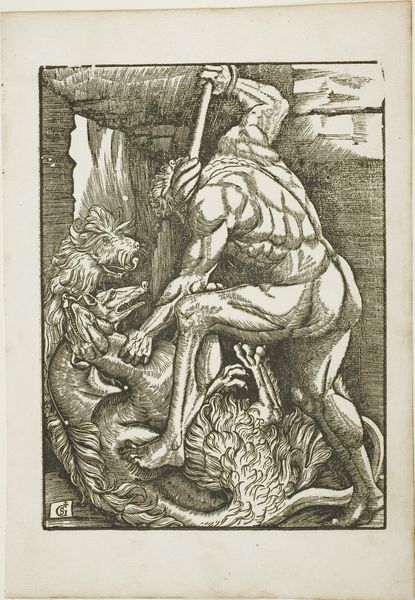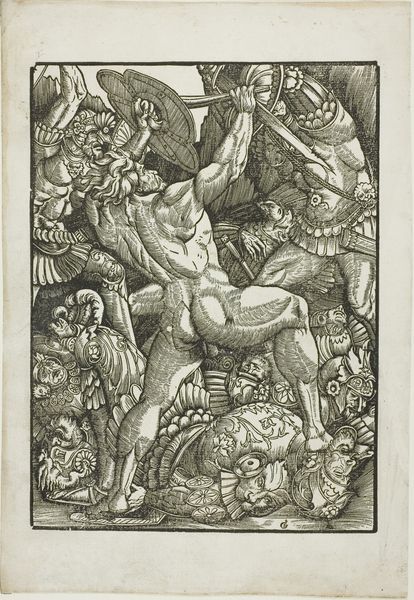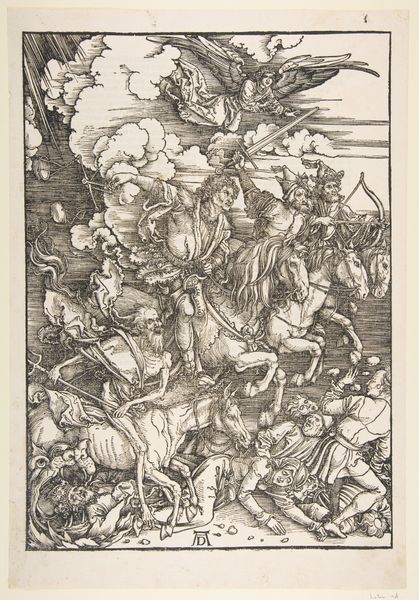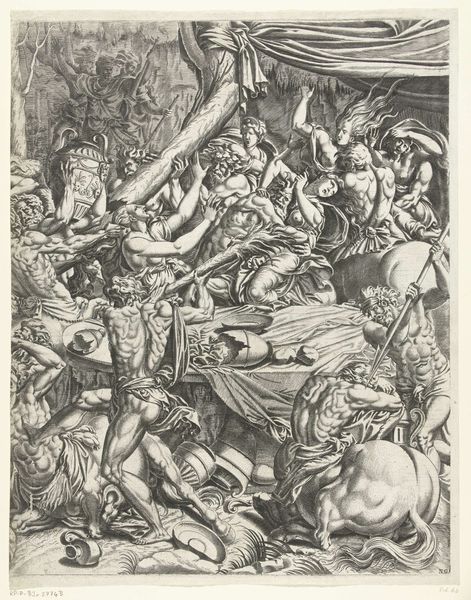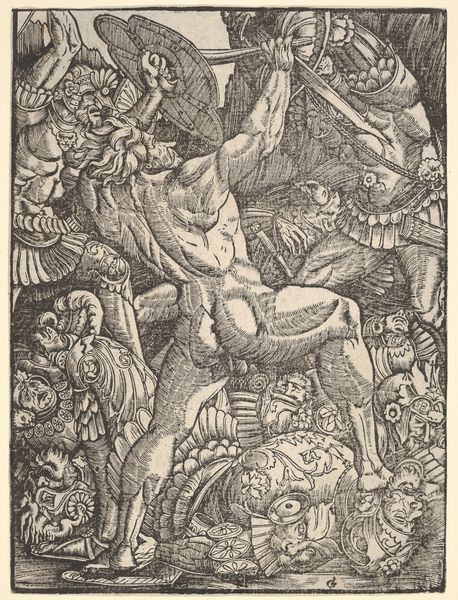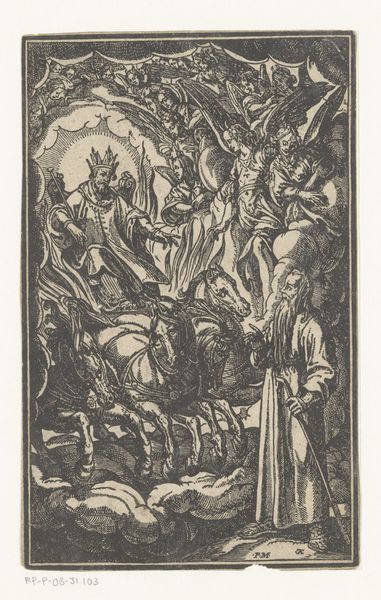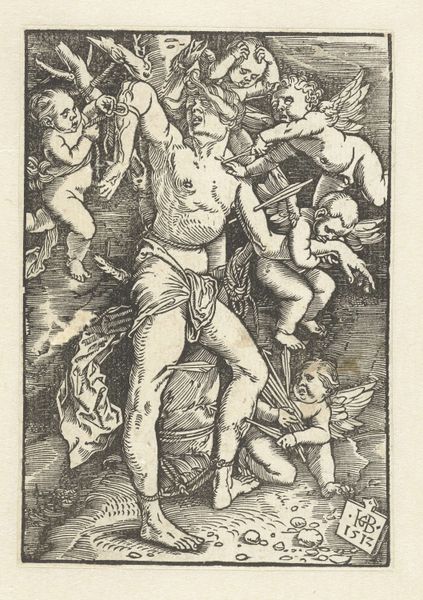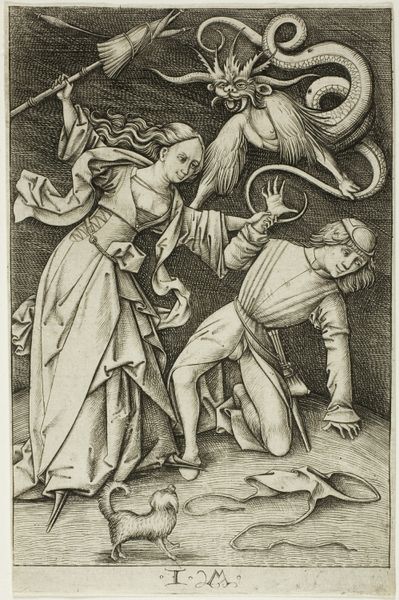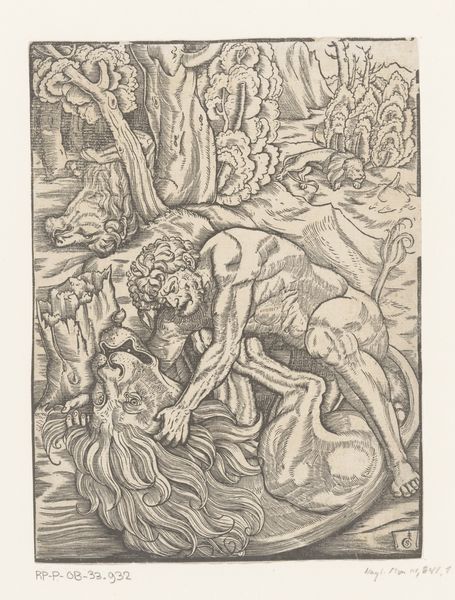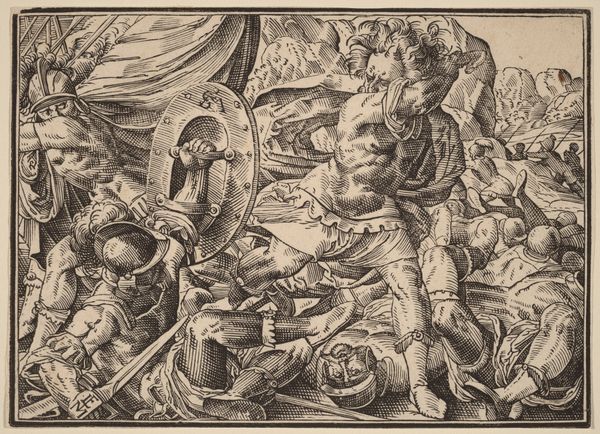
drawing, print, intaglio, paper, engraving
#
drawing
#
ink drawing
#
narrative-art
# print
#
intaglio
#
pencil sketch
#
figuration
#
paper
#
11_renaissance
#
history-painting
#
engraving
Dimensions: 198 × 145 mm (image/plate); 253 × 176 mm (sheet)
Copyright: Public Domain
Curator: What we’re looking at is an intaglio print entitled "The Labors of Hercules: Hercules and Cacus," dating back to around 1528. It resides here at the Art Institute of Chicago. The piece showcases Hercules’ battle with Cacus. Editor: My first thought? Dynamic chaos! The composition is a whirlwind of limbs, weaponry, and terrified onlookers all rendered with incredibly precise detail in monochromatic engraving. It has a definite dramatic intensity that pulls you right into the myth. Curator: Precisely! The print participates in the popularization of classical themes during the Renaissance. Think about how the Hercules myth was deployed—he becomes the figure that stands in against the disorder threatening social structures. Hercules, then, becomes an allegorical representation of power that maintains those systems. Editor: Absolutely, the narrative presents itself as more than a simple heroic victory. It reflects the era's anxieties regarding social stability, class, and gendered power dynamics. In Hercules’ victory, do we celebrate triumph over savagery or perpetuate systemic power imbalances, reflecting social constructs of the time? Curator: Interesting point. And consider the print’s role in disseminating these ideas! Prints democratized art, making heroic imagery and narratives available to a wider audience, thus solidifying those Renaissance ideologies. The artwork becomes a powerful tool in constructing and perpetuating the accepted image of what a hero or moral person would be. Editor: It definitely provides us a focal point through which to look at the complex web of history, mythology, and societal messages that resonate with modern conversations about morality and who we celebrate, and why. Curator: Exactly. The beauty of studying works like this lies in unveiling those layers, acknowledging both the artistic achievement and the complex, often problematic, values they promoted and were wrapped up in. Editor: Agreed, and perhaps by viewing those past stories through the lens of contemporary discourse, we have the space to consider ways we interpret and interact with similar concepts in the current day.
Comments
No comments
Be the first to comment and join the conversation on the ultimate creative platform.
